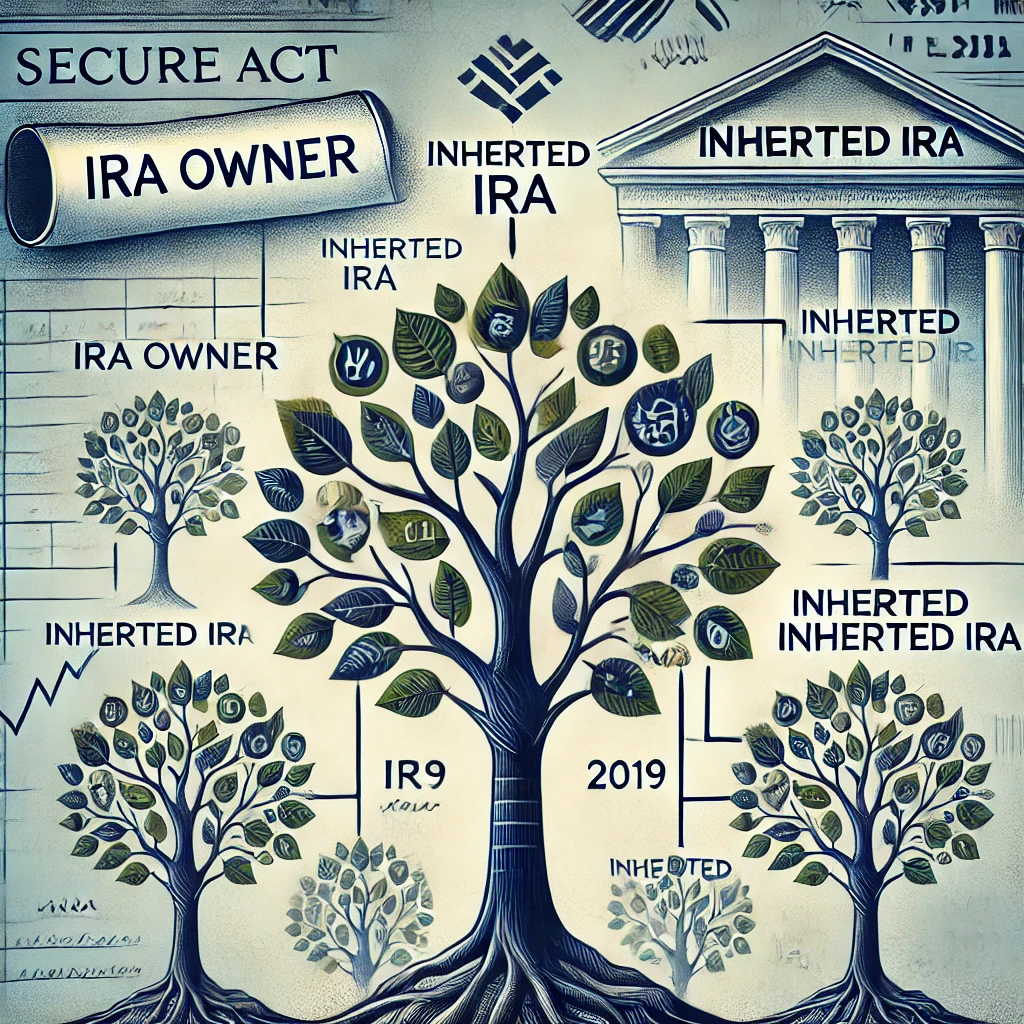I’ve been a financial advisor since 2001 and a CFP® since 2006. In all those years, I’ve never had a client die who was the owner of an inherited IRA (sometimes referred to as a beneficiary IRA). Unfortunately, this scenario just played out and I had to do a lot of research. The complication is the SECURE Act and SECURE Act 2.0 as it pertains to the distribution rules for successor beneficiaries of an inherited IRA. I called three CPAs and one Enrolled Agent regarding this issue, none of them knew the answer.
When the owner of an IRA dies away before the account is fully depleted, the IRA transfers to their beneficiary. Oftentimes this beneficiary is a spouse and the spouse will elect to make the IRA their own. When the beneficiary is someone other than a spouse or an eligible designated beneficiary, the IRA becomes an Inherited IRA of the beneficiary. There some instances when a spouse would elect to make the IRA an Inherited IRA.
More often than not, the beneficiary of this Inherited IRA will utilize the entire account within their lifetime. However, there are instances when the beneficiary passes away while there remains a balance in the account. In such cases, the Inherited IRA is transferred to the named successor beneficiary, resulting in what can be termed an “Inherited Inherited IRA.”

It is crucial to understand that each of these account categories—IRA, Inherited IRA, and “Inherited Inherited IRA”—is governed by distinct Required Minimum Distribution (RMD) rules, which underwent significant changes in 2019 due to the SECURE Act. For the purposes of this article, the biggest change the SECURE Act made was the elimination of the “stretch” provision for many non-spouse beneficiaries and the introduction of the 10-year rule for non-eligible beneficiaries. Beyond changes impacting the immediate heirs of retirement accounts, the SECURE Act also adjusted rules affecting the next tier of beneficiaries—those who inherit an IRA that was already inherited from the original owner (the “inherited inherited IRA”).
“Well isn’t that the million dollar question!”
Mark Lay, CPA
Distribution Rules for “Inherited Inherited IRAs”
When an individual inherits an already inherited IRA, they are referred to as a Successor Beneficiary. Prior to the enactment of the SECURE Act, Successor Beneficiaries were required to continue taking annual distributions based on the life expectancy of the preceding account owner. So, what are the new distribution mandates?
The distribution rules for Successor Beneficiaries of an Inherited IRA depends on two key factors:
- The date of death of the original IRA owner
- Whether the original beneficiary of the original IRA was an “Eligible Designated Beneficiary” or a “Non-Eligible Designated Beneficiary.”
An Inherited IRA owner is classified as an “Eligible Designated Beneficiary” if they meet one of the following criteria:
- Spouse of the decedent
- Minor child of the decedent
- Not more than 10 years younger than the decedent
- A disabled or chronically ill individual
Those who do not fall within these parameters are categorized as “Non-Eligible Designated Beneficiaries.”
Given these beneficiary classifications, there are three potential distribution rules for successor beneficiaries of an Inherited IRA
Scenario #1: Successor Beneficiary of a Pre-2020 Designated Beneficiary
If the original IRA owner passed away before 2020 the Successor Beneficiary of the Inherited IRA is bound by the 10-year rule. This requires the Successor Beneficiary (the owner of the “Inherited Inherited IRA”) to deplete the account entirely within 10 years of inheriting it.
Scenario #2: Successor Beneficiary of a Post-2020 Eligible Designated Beneficiary
If the original IRA owner passed on or after January 1, 2020, and the original inheritor was an Eligible Designated Beneficiary, the distribution rules mirror Scenario #1. The Successor Beneficiary must withdraw the account’s full balance within 10 years following the inheritance.
Scenario #3: Successor Beneficiary of a Post-SECURE Act Non-Eligible Designated Beneficiary
In cases where the original IRA owner died on or after January 1, 2020, and the inheritor was a Non-Eligible Designated Beneficiary, the Successor Beneficiary does not receive a new 10-year withdrawal period. Instead, they must adhere to the existing 10-year timeframe established for the previous beneficiary. For instance, if the predecessor beneficiary inherited the account six years earlier, the Successor Beneficiary has four years remaining to withdraw the balance.
Planning Opportunities
The SECURE Act effectively curtailed the ability for Successor Beneficiaries to extend the withdrawal of retirement account distributions over their lifetimes. While this development may pose challenges for some, it could potentially offer enhanced flexibility and planning opportunities for others.
If you encounter this scenario and need help, please do not hesitate to get in touch with me.
